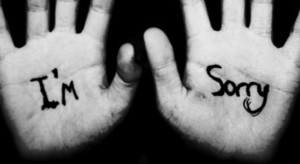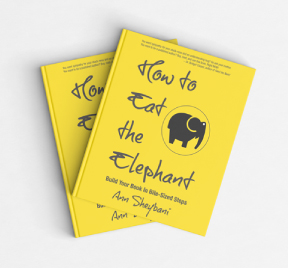Writing
An Object Is Worth A Thousand Words
June 7, 2016
I was driving along the highway in Connecticut when I fell behind a mini Cooper with one of those vanity plates that made me want to hit the brakes. It had two words on it: Xin Loi. It’s a long story how I know this, and neither of us has time to get into it, but Xin Loi means “I’m sorry” in Vietnamese.
Even before I passed the car, I knew exactly who I would see behind the wheel: a 60-70-year old man with close-cropped hair, a smoker, someone with a tattoo on his arm. But more than what he looked like, I knew who he was: A soldier who had done at least one tour of duty in Vietnam, who had done something horrible there that haunted him still. Vietnam had been the defining chapter in his life.
That one object–a vanity license plate– told me an entire story.
We constantly look for clues as to who we’re dealing with in our everyday lives. It’s why we snoop through medicine cabinets, and examine the trinkets on someone’s desk; why we study the bookshelves before we decide to go out on a date with someone. (At least I hope that’s not just me!)
An object can represent a person: it can tell a much bigger story.
For instance, to me, my mother is a bottle of Maalox and a chalky spoon. She swallowed the stuff like it was going out of style, along with the emotions and words that caused her ulcer. I see a bottle of it, and I am immediately taken back to scenes of her from my childhood.
My father is a violin; it’s the instrument he played in the basement whenever he drank.
My brother is Blitzkrieg, a weird little game with a thousand cardboard pieces, which he would play on his bedroom floor because he had few real friends when we were kids. (Xin loi, but the boys in our neighborhood were bastards.)
I’m going to back up a little, so you see where I’m going with this.
When we begin our first drafts, our job as writers is to get the situation down on the page. (The story, the deeper meaning, usually comes much later.) We get the setting in place, and the characters. We have them say things to each other, move their bodies in such a way as to express emotion, and do things to drive the story forward. In the beginning, we list objects, or personal details to fill the space around these things. We take a snapshot of the room and throw some interesting things on the wall, or on a nightstand. Most of the time our choices are pretty random.
But there comes a time when you want to consider said choices. The right details or objects can do some very heavy lifting. They can save you pages of exposition.
What does the lazy Susan filled with vitamin bottles, the one on the kitchen table, say about the woman who lives there?
What do we know about a character from his ponytail, or his crew cut?
A $9,000 purple handbag tells you what about the owner?
What story does a braided rag rug tell you that a Persian rug doesn’t?
Look around you. Notice what draws your attention, and the stories you tell yourself.
And this from the author Matt Selesses:
Use recurring images/objects to ground the reader. A birthmark or deformity or dyed hair or simple dimple that we can be reminded of, can bring up the entire picture of a character we had when we first met her. An object in the story can be used to remind us of various storylines, or to remind us of theme. Objects can be attached in the reader’s mind to these things, and when they come up in the story, they can point us in the right direction or keep us aware of something that might otherwise fade into the background.
_________________________________________________________________________
Are you a writer who has a problem getting your ass in that chair long enough to actually finish up your project? Well, you’ll want to subscribe to my writing love notes, brief reminders to sit your butt down and face the page. The why, when, and how of getting words down automatically delivered to your inbox for free when you need them most. Just CLICK HERE.



